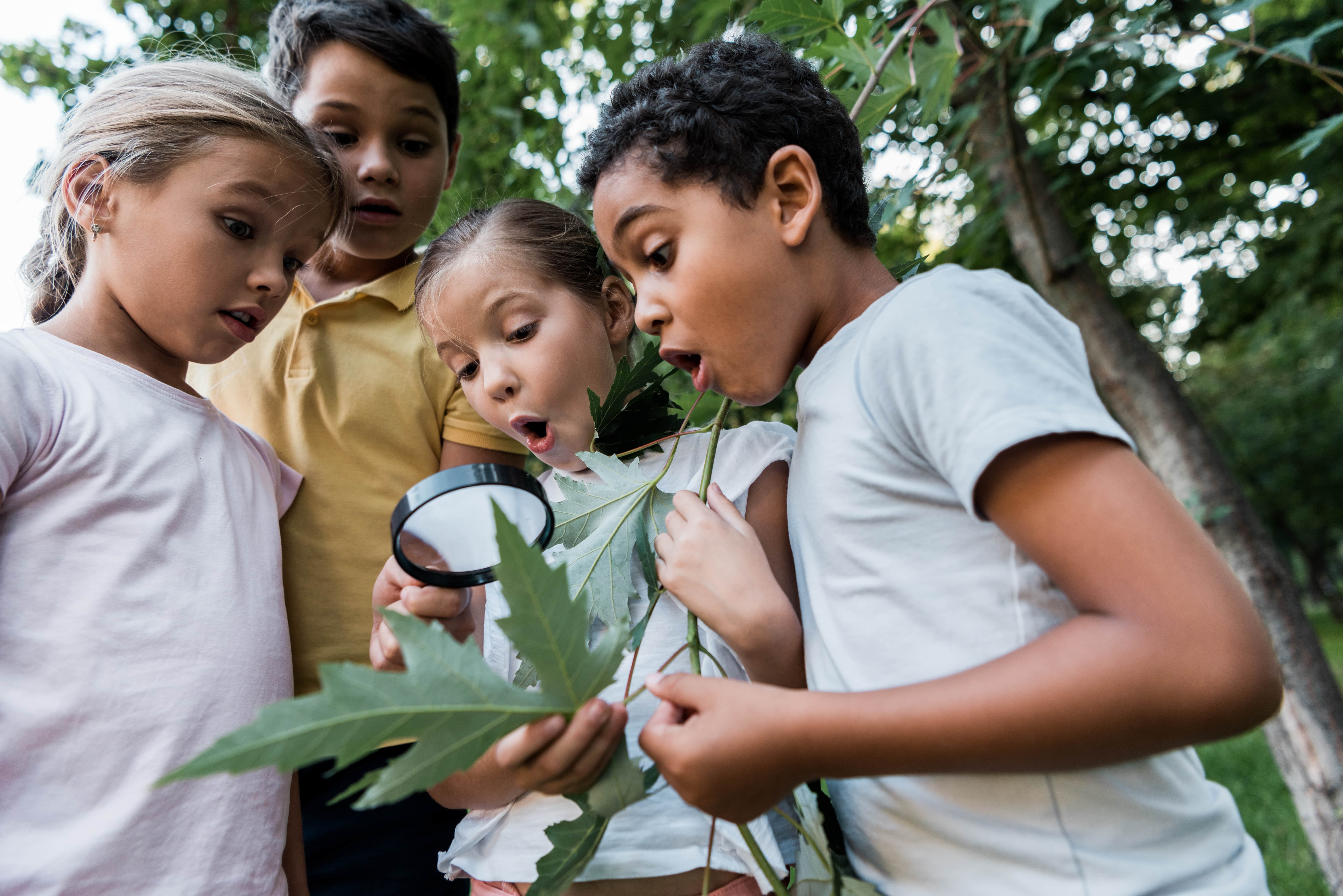Discover the year-round benefits of outdoor play for children, including improved health, learning, and creativity—plus seasonal activity ideas you can do at home!
In an age where digital devices are more accessible than ever, outdoor play is becoming an increasingly rare part of childhood. Yet, it’s one of the most critical aspects of a child’s physical, mental, and emotional development. Playing outside isn’t just a way to burn off excess energy, it lays the foundation for a healthy, well-rounded life.
Here’s a deeper look at why outdoor play is so beneficial for children:
Benefits of Outdoor Play for Children
1. Boosts Physical Health
Outdoor play is one of the most natural and effective ways to promote physical activity in children. Activities like running, climbing, biking, jumping, and throwing engage large muscle groups and improve balance, coordination, and agility. Unlike structured indoor sports, outdoor play offers a dynamic, varied environment where children can move freely, which helps prevent sedentary lifestyles that are often linked to obesity and chronic health conditions like diabetes.
Moreover, exposure to sunlight while playing outside contributes to the production of vitamin D, which is essential for healthy bone development and immune function. Even a short time outdoors each day can have significant physical health benefits that can last a lifetime.
2. Supports Mental and Emotional Well-being
Being outside helps children decompress and relax in ways that indoor environments often cannot. Natural settings have a soothing effect on the brain, helping to lower levels of cortisol (the stress hormone) and reduce symptoms of anxiety and depression. Children with ADHD, in particular, may experience increased focus and reduced impulsivity after spending time in green spaces.
Outdoor play also encourages independence and emotional resilience. When children explore nature, they often face manageable challenges, such as climbing a tree or navigating uneven terrain, that build confidence and foster a sense of accomplishment. These small wins contribute to a child’s emotional maturity and ability to handle adversity.
3. Fosters Social Skills
Outdoor play often occurs in shared spaces like parks, playgrounds, and backyards, where children naturally interact with one another. These interactions are rich opportunities for learning how to share, take turns, and cooperate. Playing games with peers teaches negotiation, conflict resolution, and leadership skills.
In unstructured play settings, children create their own rules, roles, and storylines, which enhances communication and social understanding. They learn to read social cues, express empathy, and develop friendships based on mutual interests and shared experiences.
4. Encourages Creativity and Imagination
Unlike many indoor toys that have predefined uses, nature provides open-ended materials like sticks, stones, leaves, and water, that can become anything a child imagines. A fallen branch might become a magic wand, a cave, or a bridge to another world. This kind of imaginative play supports cognitive development by encouraging abstract thinking and problem-solving.
When children are allowed to invent their own games and scenarios, they engage in storytelling, role-play, and critical thinking. These are foundational skills for innovation and creativity in adulthood. Outdoor play nurtures the kind of "out-of-the-box" thinking that classrooms and screens sometimes struggle to inspire.
5. Improves Academic Performance
Outdoor play and academic success may seem unrelated, but research suggests a strong connection. BMC Public Health published a study that found that children who are physically active and spend time in natural environments often have better attention spans and perform better in school. Time spent in green spaces has been linked to improvements in memory, concentration, and executive function.
Moreover, play enhances brain development by fostering curiosity and intrinsic motivation—two essential ingredients for effective learning. Children who explore the outdoors often engage in informal science and math learning as they count rocks, observe insects, or measure how far they can jump. These hands-on experiences reinforce classroom learning and make abstract concepts more tangible.
6. Develops Environmental Awareness
Spending time outdoors allows children to witness firsthand the beauty, complexity, and fragility of the natural world. They learn not just from books or screens, but through tactile experiences like touching tree bark, watching birds, or seeing a caterpillar transform into a butterfly.
These early connections with nature build a sense of stewardship and responsibility for the environment. Children who grow up playing outside are more likely to value conservation, sustainability, and eco-friendly practices later in life. Outdoor play doesn’t just benefit the child, it helps shape future citizens who care about the planet.
Seasonal Outdoor Activities to Keep Kids Engaged All Year Round
No matter the weather, every season offers unique opportunities for outdoor play that can enrich a child’s development. From splashing in spring puddles to sledding through winter snow, each activity helps children stay active, curious, and connected to the natural world. Here’s a season-by-season guide filled with fun, age-appropriate ideas to make the most of the outdoors all year long.
Spring Outdoor Activities
Spring is perfect for exploring nature as it comes back to life. Mild weather and blooming landscapes make it an ideal season for sensory-rich experiences.
Activities:
- Nature scavenger hunt: Look for budding flowers, bird nests, insects, and new leaves.
- Gardening: Plant flowers, herbs, or vegetables together. To learn more about gardening with children, read our blog post, How to Start a Kid-Friendly Garden This Spring.
- Puddle jumping: Dress in boots and raincoats and let kids explore rainy days.
- Kite flying: Great for open parks and learning about wind and weather.
- Bike riding: Start on quiet paths or trails to build confidence and coordination.
- Bug or bird watching: Use simple journals or binoculars to record sightings.
Summer Outdoor Activities
Longer days and warmer weather open up a world of possibilities for outdoor fun and water play.
Activities:
- Sprinkler or water balloon games: Keep cool while staying active.
- Beach or lake day: Build sandcastles, collect shells, or swim under supervision.
- Hiking: Choose child-friendly trails with interesting features like creeks or lookouts. Add an educational element to your hike by exploring math in nature!
- Picnics in the park: Combine play with family bonding and healthy meals.
- Stargazing or camping: Teach kids about constellations and experience nature at night.
- Obstacle courses: Use backyard items to create a mini adventure circuit.
Autumn Outdoor Activities
Crisp air and colourful leaves make fall a perfect season for exploration and creativity.
Activities:
- Leaf collecting and crafts: Make collages or press leaves in a scrapbook.
- Apple or pumpkin picking: Educational and delicious fun.
- Forest walks: Talk about changing seasons and observe animals preparing for winter. For more great forest walk activities, read our blog post, Fall Nature Walk Scavenger Hunt for Families.
- Raking leaves and jumping in piles: Great for teamwork and sensory play.
- Outdoor story time: Bring books outside and read surrounded by nature.
- Photography walks: Give kids a camera or phone and let them capture fall scenes.
Winter Outdoor Activities
Even in cold weather, children benefit greatly from outdoor play. Just dress appropriately and keep sessions shorter.
Activities:
- Snow play: Build snowmen, make snow angels, or have a snowball toss.
- Sledding or tobogganing: Fun and physical.
- Ice skating (if safe): Teaches balance and perseverance.
- Winter hikes: Look for animal tracks in the snow or frozen waterfalls.
- Bird feeding: Hang feeders and observe who visits during winter months. You can even add your own DIY birdhouse! Learn how by reading our blog post, DIY - How to Build a Birdhouse with Recycled Material.
- Outdoor art: Use coloured water in spray bottles to paint the snow.
Final Thoughts
Outdoor play is more than just recreation, it’s an essential, multifaceted component of child development. By making time for nature, parents and educators can help children build stronger bodies, healthier minds, deeper relationships, and a lasting love for the world around them.
So, whether it's a trip to the park, a hike in the woods, or simply time in the backyard, every moment spent outside helps shape a healthier, happier, and more balanced child.
Let’s unplug, step outside, and rediscover the power of play.
Stay in the know and check us out on social media! Follow BrightPath on Facebook and Instagram for a variety of fun activities and daily inspiration.







